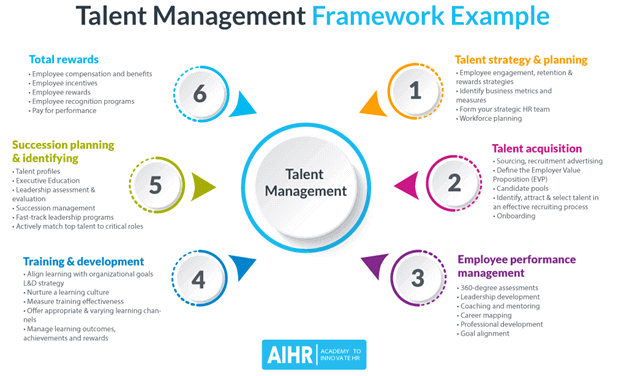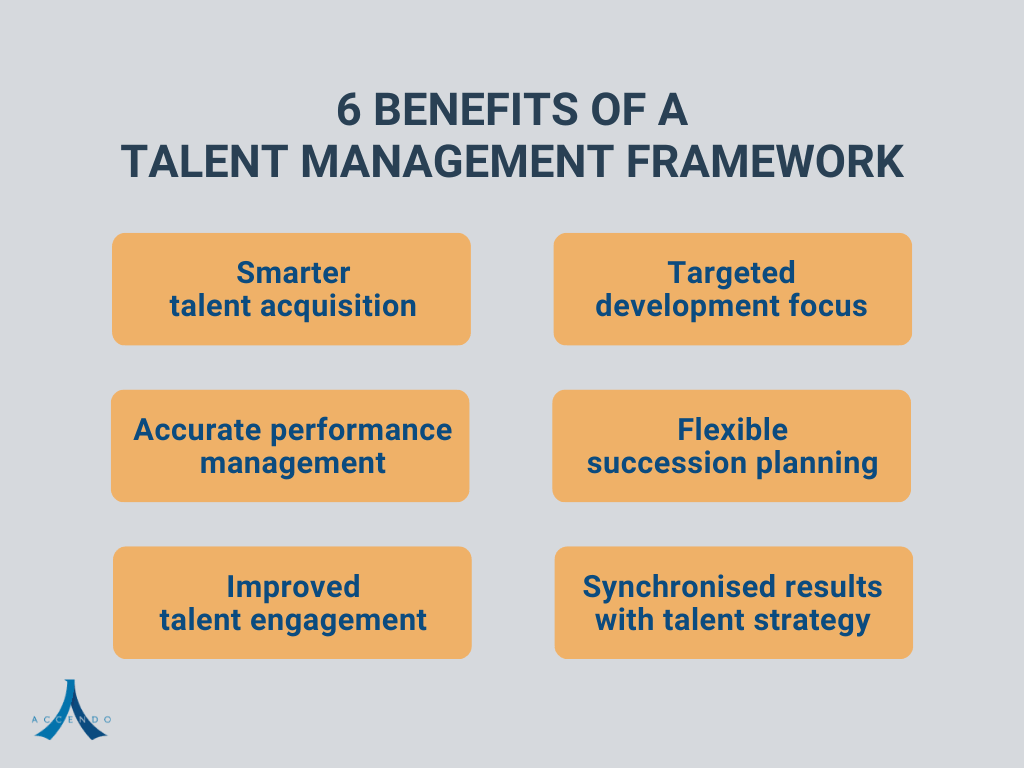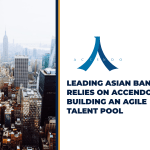
An agile talent management framework can help you execute your talent management strategy and improve performance. Developing one might sound like a complex process but it is a useful tool to maximise your human capital. Learn how you can create such a framework with our 7-step process!
Introduction
We all know that business has changed ever since the pandemic.
It is in this environment that people have to be agile. But agile teams can only be created if a culture is driven by leadership aligned with the company’s talent management system. Experts believe sustainable adaptability can be achieved by utilising talent potential and everyone has natural talent – they need the right environment and culture to sustain it.
So, what does a dynamic and flexible organisation ask of its employees?
Agility is the standard in talent management. Sure, you do not have to be as stretchable as all the General Electrics, Googles, and Apples of the world to ensure continuity. In that same vein, your employees do not all have to become a clone of Steve Jobs to keep on delivering value. It is imperative that your employees deliver agility in their own way in the roles they take on.
But how do you get around this?
An agile talent management framework can help you execute your talent management strategy and improve performance. In our article, we will explore what it means to be agile and why is it a workplace essential, why do companies need an agile talent management framework and the 7 steps needed in developing such a framework.
What is Agility and Why is it a Workplace Essential?
Times have changed and strategy is not what it used to be. One thing the pandemic made crystal clear to business owners is the ability to pivot quickly in changing circumstances. This skill is vital to survive and thrive in an ever-changing business landscape.

Agility is the fundamental requirement for all businesses in order to survive in the modern business world today. An agile workplace is well-equipped to deal with all the internal and external challenges that a business can face.
According to Gallup, there are eight factors that drive agility:
- Cooperation
- Speed of decision making
- Trial tolerance
- Empowerment
- Technology adoption
- Simplicity
- Knowledge-sharing
- Focus on innovation
The urgency also caused many companies to discover new ways to operate effectively with a significant portion of their employees working remotely.
On the other hand, technology has made the world a smaller place while, at the same time, speeding it up. Businesses today need to work smarter and faster to accomplish more in less time. And corporate agility is that trait for businesses striving to set and achieve standards for efficiency and productivity.
What is a Talent Management Framework?
A talent management framework provides structure to your company’s plan to meet the human capital that is aligned with your business needs. It also helps to ensure that you have all you need to execute your talent management strategy and boost your workforce’s performance.
A good framework serves as your checklist when creating a strategy and increasing efficiency within your organisation’s talent pool. From an agile point of view, this approach is ideal if your strategies are constantly shifting to address the evolving needs of the market. Here are some advantages of a supportive and agile talent management framework:
- Attracting and retaining top talent – A survey showed that 76% of employees are looking for growth opportunities. You can use a talent management framework to show what you can do for your employees, attract new talent, and retain the people you have.
- Improving employee and organisational performance – All machines have a scheduled maintenance plan. Neglecting them can result in shutdowns and high costs of maintenance. Similarly, companies can increase their employee and organisational performance by monitoring and knowing what needs to be done to avoid shutdowns.
- Engaging employees – A talent management framework with a talent dashboard enables companies to discuss their employees’ career growth, development, and training strategies. All staff can be on the same page which eliminates the guesswork.
- Strengthening talent development strategies – A talent management framework provides companies with the resources and a directional goal to understand what skills their employees lack. This, in turn, enables companies to effectively develop their talent and focus on combining business needs with employee goals.
- Improving succession planning – Having a succession plan is a great benefit. You can make succession planning a part of your talent management framework to give you direction, identify talent gaps, and prepare you for the future.

An agile talent management framework should also be flexible and scalable to handle fluctuating volumes of work. Hence, care should be taken into consideration when creating one.
Why Do Companies Need an Agile Talent Management Framework?
Many organisations do not have a formal talent management framework. As a result, they tend to solve problems on an ad-hoc basis or on the fly.
According to Josh Bersin, a talent management framework is equivalent to a supply chain. As a business, you should never just wing it and hope to find a new supplier or build a new plant overnight. There should always be a plan, a contract to sign, and careful monitoring over time of the product, timing, and return on investment.
As companies rethink the way they organise their talent, here are six benefits of an agile talent management framework:

1. Smarter talent acquisition
When seeking talents, the key is to be specific in areas where necessary skills are more efficiently recruited for, as this can leave an impact on your workforce. Hiring externally solely to fill roles might feel like a shortcut and the simplest option but it can also deter current employees from upskilling efforts.
2. Talent development focus
Studies have shown that an engaged, supported workforce can bring better business results. Finding the right skills to train for requires understanding the skills your workforce has and knowing how they align with your company’s business priorities. This process is known as career pathing. As such, L&D efforts are key components in any framework.
3. Accurate performance management
With the right KPIs in place, the success of a talent management framework can be understood and acted upon. Talent assessments show HR leaders and managers how employees are performing. These can help you make better decisions about who to hire and how to promote them, how to align with business priorities and create an efficient workforce in your company.
Find out how Accendo’s Assessment Marketplace can help to evaluate candidate performance, potential, and digital readiness in order to recruit, select, and promote with confidence.
4. Flexible succession planning
Redundancies might exist within any company but voluntary departures can halt any business in its tracks. If your employees are locked behind organisational silos, it may seem as if their skill gaps are greater than they are. Knowing how your workforce’s skills align with their roles and responsibilities can prioritise unexpected departures and clarify the skills of future candidates.
5. Improved talent management
Career development, L&D strategies, and passions are unique to each of your employees. It might be impossible to address every employee’s needs on an individual level, but allowing them to be matched with the right opportunities is achievable. Providing real opportunities to your workforce that align with their interests and career aspirations can help nurture a desire to grow within your company.
6. Synchronised results with talent strategy
Aligning your strategy to your company’s core principles ensures that every decision will go towards a stronger and more capable organisation. These principles may shift over time, which is why having a framework in place can guide you on how to address new challenges while putting your organisation at an advantage over your competitors.
7 Steps to Develop an Agile Talent Management Framework
Developing a talent management framework seems like a lot of work, let alone making it an agile one. Your HR leaders and managers often focus on managing day-to-day operations instead of working towards the future. Yet, putting this together will reduce everyone’s stress and workload eventually, while also keeping your employees motivated and engaged.
Here are the 7 steps you need to get you started!

1. Ensure leadership buy-in
While talent management may be in the HR department’s specific scope, you cannot build this without management buy-in. You need to have alignment across the organisation. If HR develops the framework on its own, it will be a wasteful side project. Support from the C-level is critical for a successful framework.
2. Analyse your organisational needs
You cannot assess talent needs and gaps without understanding your business needs and goals. To build a proper framework, you need to conduct a formal needs analysis and speak to various people to understand the objectives. Companies with organisational silos tend to miss out on how talent can help them succeed. A good framework can bring that together.
3. Review your employee lifecycle
Reviewing each stage of your employee lifecycle allows you to identify where the potential for improvement is. Ask yourself a few questions:
- What is your approach to recruiting?
- Are your sourcing techniques bringing in candidates to help with business success?
- When does turnover happen?
- Do you have enough long-term employees?
The idea is to figure out what is going wrong and why they leave. Providing your employees with a clear career path and sufficient opportunities for learning and development will give them a higher likelihood of staying at your company.
4. Identify the KPIs in your talent management framework for success
Not only do you need to identify the Key Performance Indicators (KPIs), you need to figure out how to measure them. How do these fit into your overall business goals? Assuming talent acquisition is one of the KPIs of your framework, a good metric to track would be time-to-hire, which helps you evaluate the efficiency of your recruitment process.
5. Be employee-focused
No matter how brilliant your framework and strategy are, they will not succeed without the right employees. The right employees need the proper support, environment, and development to grow. It is not surprising that the best talent management frameworks are employee-focused. If your framework requires 80 hours a week of work from everyone to achieve business success, it will struggle to get off the ground as it is not truly employee-focused.
6. Develop tools to ensure your framework delivers
Do you have the systems necessary for communication, collaboration, documentation, and integration across departments and divisions? Do you provide course reimbursement? If not, people are discouraged to take outside courses to upskill themselves. How does your total rewards package compare to your competitors? A framework without proper tools won’t help.
7. Put your framework into action
Much like everything else, getting everything down on paper is one thing, but putting it into action is another. This is an organisational transformation and, like all transformations, you will meet resistance. Draw up a plan to deal with this and prepare support for the employees who will struggle with the transformation.
As we continue to tackle unpredictable markets and digital environments with rapid and relentless innovation, setting up your agile talent management framework has never been more important. New challenges are evolving and talent demands are shifting.
You will have to constantly develop new strategies to remain agile while building strong business abilities and enhanced growth. Planning sounds like a challenge but that doesn’t mean you shouldn’t do it.
Digital business agility and workforce transformation are the ways of the future. Learn how Accendo’s Digital Change model can help you understand the current and future states of your employee’s digital mindset and identify key gaps to optimise digital transformation.
Page Contents






